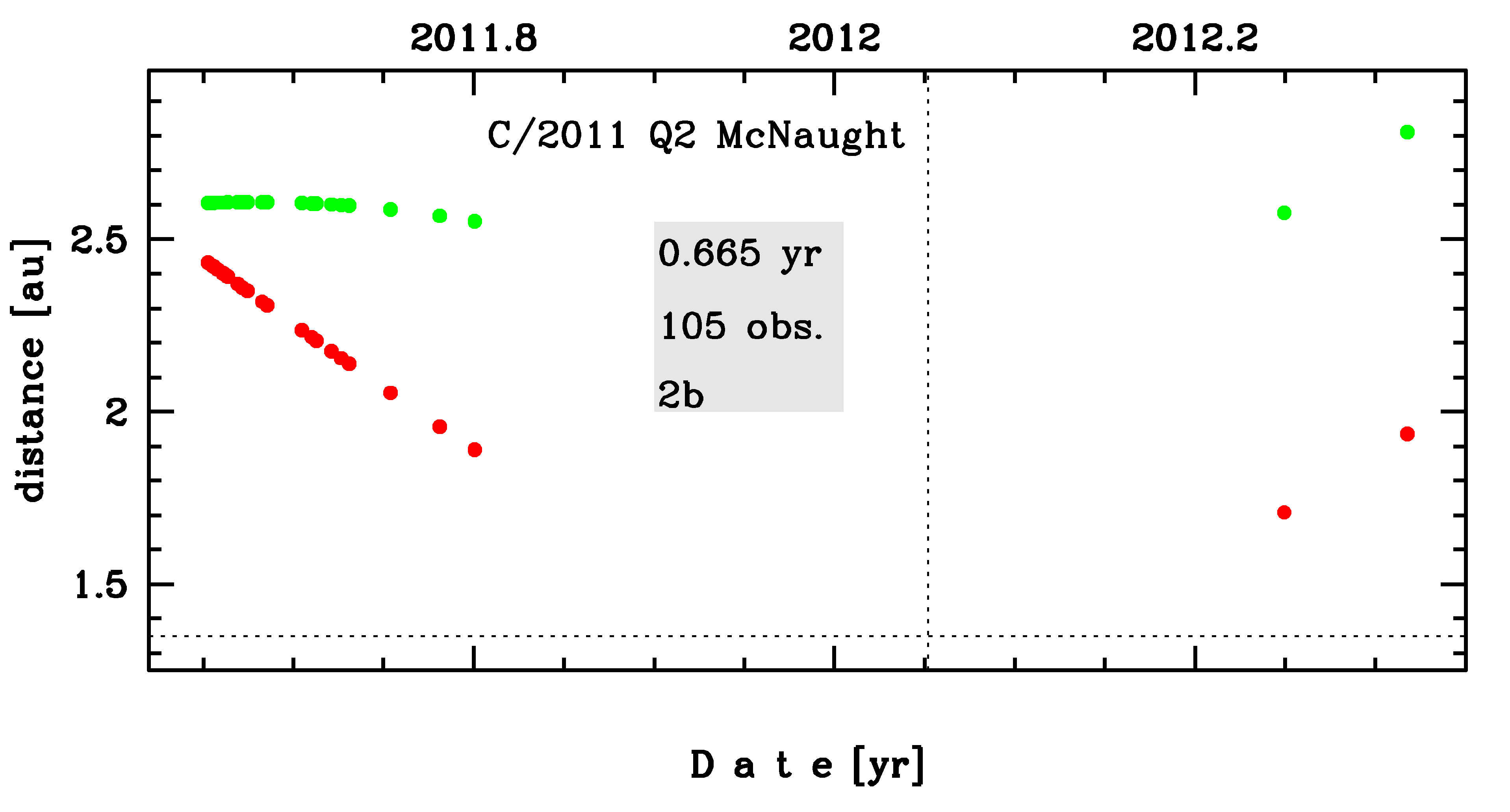C/2011 Q2 McNaught
more info
Comet C/2011 Q2 was discovered on 26 August 2011 by Robert H. McNaught (Siding Spring), that is almost 5 months before its perihelion passage. It was observed until 26 April 2012.
Comet had its closest approach to the Earth on 26 January 2012 (2.271 au), a week after its perihelion passage.
Solution given here is based on data spanning over 0.665 yr in a range of heliocentric distances: 2.43 au – 1.349 au (perihelion) – 1.94 au.
This Oort spike comet suffers notable planetary perturbations during its passage through the planetary system that cause a tighter future orbit with original semimajor axis of about 1,000 au (see future barycentric orbits).
See also Królikowska 2020.
Comet had its closest approach to the Earth on 26 January 2012 (2.271 au), a week after its perihelion passage.
Solution given here is based on data spanning over 0.665 yr in a range of heliocentric distances: 2.43 au – 1.349 au (perihelion) – 1.94 au.
This Oort spike comet suffers notable planetary perturbations during its passage through the planetary system that cause a tighter future orbit with original semimajor axis of about 1,000 au (see future barycentric orbits).
See also Królikowska 2020.
| solution description | ||
|---|---|---|
| number of observations | 105 | |
| data interval | 2011 08 26 – 2012 04 26 | |
| data type | perihelion within the observation arc (FULL) | |
| data arc selection | entire data set (STD) | |
| range of heliocentric distances | 2.43 au – 1.35 au (perihelion) – 1.94 au | |
| detectability of NG effects in the comet's motion | comet with determinable NG~orbit | |
| type of model of motion | GR - gravitational orbit | |
| data weighting | YES | |
| number of residuals | 202 | |
| RMS [arcseconds] | 0.22 | |
| orbit quality class | 1b | |
| orbital elements (heliocentric ecliptic J2000) | ||
|---|---|---|
| Epoch | 2011 09 13 | |
| perihelion date | 2012 01 19.79252990 | ± 0.00113764 |
| perihelion distance [au] | 1.34955367 | ± 0.00000331 |
| eccentricity | 1.00000028 | ± 0.00001889 |
| argument of perihelion [°] | 34.630658 | ± 0.000583 |
| ascending node [°] | 287.369175 | ± 0.000122 |
| inclination [°] | 36.86687 | ± 0.000087 |
| reciprocal semi-major axis [10-6 au-1] | -0.20 | ± 14.00 |
